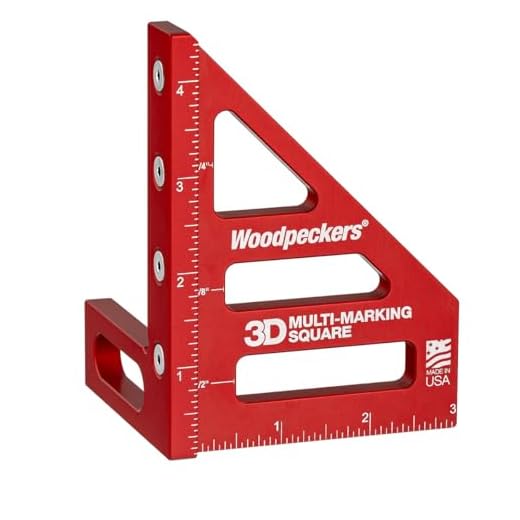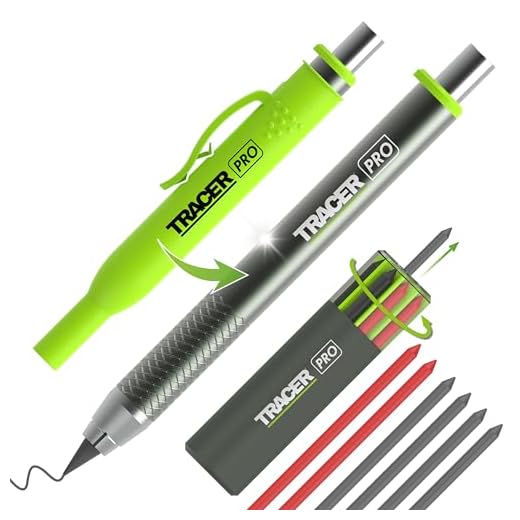








Carpenter pencils are an essential tool for carpenters, builders, and woodworkers. They have a unique shape and design, which makes them perfect for marking and measuring on rough surfaces. Have you ever wondered how these pencils are made? Let’s take a closer look at the manufacturing process of carpenter pencils.
The first step in making a carpenter pencil is choosing the right type of wood. Quality carpenter pencils are made from high-quality wood like cedar or basswood. These woods are known for their durability and ability to withstand rough use. The selected wood is then cut into small, rectangular pieces that will form the body of the pencil.
Next, the lead is inserted into the wooden body. Unlike regular pencils, the lead used in carpenter pencils is thicker and stronger, allowing it to withstand the rigors of carpentry work. The lead is carefully inserted into a groove in the wooden body, ensuring that it is securely held in place.
Once the lead is in place, the wooden body is shaped and finished. The rectangular piece of wood is usually rounded or hexagonal in shape to make it easier to grip. The edges are sanded down, and the body is coated with a protective finish that enhances durability and resistance to moisture. Finally, the pencil is painted in the traditional carpenter pencil colours of yellow or red, making it easy to locate in a tool belt or toolbox.
In conclusion, the manufacturing process of carpenter pencils involves selecting high-quality wood, inserting a thick and strong lead, shaping the body and applying a protective finish. These steps ensure that carpenter pencils are durable, reliable, and perfectly suited for the tough demands of woodworking and carpentry projects.
The Origins of Carpenter Pencils
Carpenter pencils have a long and rich history that dates back centuries. The origins of the pencil itself can be traced back to ancient Roman times, where the first versions of graphite writing tools were used. However, it was not until the 16th century that the modern pencil as we know it today began to take shape.
The concept of a carpenter pencil specifically was born out of necessity. Carpenters needed a pencil that could withstand their rigorous work and provide precise and durable markings. Thus, the carpenter pencil was invented.
Early Designs
Early carpenter pencils were often handmade. Carpenters would take a rectangular piece of wood and carve a groove down the length of one side. The groove would then be filled with a graphite stick, creating a sturdy and long-lasting writing tool. The flat shape of the pencil prevented it from rolling away when placed on uneven surfaces, making it ideal for carpentry work.
Modern Manufacturing
Today, carpenter pencils are predominantly manufactured using machinery. The process begins with the cutting of rectangular slats of wood, typically made from cedar or other softwood. These slats are then shaped into the familiar elongated shape of a carpenter pencil using precision cutting tools.
Once the shape is formed, a groove is cut into the pencil to hold the graphite core. The groove is designed to provide easy access to the carbon core, allowing carpenters to quickly and efficiently sharpen their pencils while on the job.
The graphite core, which is thicker and stronger than that of a regular pencil, is then inserted into the groove. The core is made from a specialized mixture of graphite and clay, resulting in a lead that is highly resistant to breaking or crumbling.
Finally, the pencil is often finished with a coating of lacquer or paint, which protects the wood from moisture and wear. Some carpenter pencils also feature additional features, such as an eraser or a handy clip for attaching to a pocket or tool belt.
Overall, the origins of carpenter pencils are rooted in the need for a durable and practical writing tool for carpenters. From their humble handmade beginnings to modern manufacturing techniques, carpenter pencils continue to be an essential tool for professionals in the woodworking and construction industries.
The Process of Manufacturing Carpenter Pencils
Creating carpenter pencils involves several steps in the manufacturing process. These steps ensure that the pencils are sturdy, reliable, and suitable for the demanding tasks performed by carpenters.
- Wood Selection: The first step is to select high-quality wood that is strong and durable. Typically, carpenter pencils are made from cedar wood due to its strength and resistance to breakage.
- Wood Cutting: Once the wood is selected, it goes through a cutting process to shape the pencil blanks. The blanks are cut into the desired length and shape.
- Lead Insertion: After the wood cutting, the pencil blanks undergo the lead insertion process. A groove is created along the length of the pencil, and a thick, flat lead is inserted into the groove. This unique lead design allows carpenters to create thick, bold lines that are easily visible on rough surfaces.
- Gluing: The lead is secured in place by applying adhesive to the groove. This ensures that the lead remains in place during use and does not move or fall out.
- Sharpening: Next, the pencil blanks are sharpened to create a smooth, pointed tip. The sharpening process can be done manually or using automated machinery, depending on the manufacturer.
- Painting and Branding: Once the carpenter pencils are sharpened, they are ready for painting and branding. The pencils are coated with a layer of paint that adds color and protects the wood from moisture and wear. Manufacturers also add branding, such as logos or product names, to distinguish their pencils from others.
- Quality Control: Finally, the finished carpenter pencils undergo a thorough quality control check. This ensures that the pencils meet the required standards in terms of lead alignment, sharpness, paint finish, and overall quality.
Overall, the process of manufacturing carpenter pencils involves careful wood selection, precise lead insertion, sharpening, painting, and quality control. These steps are crucial in creating carpenter pencils that are reliable, durable, and efficient for woodworking tasks.
The Benefits of Carpenter Pencils
Carpenter pencils are a popular choice among carpenters and woodworkers for several reasons. These specialized pencils offer unique features and benefits that make them essential tools in the trade.
Durable and Long-Lasting
One of the main advantages of carpenter pencils is their durability. Made with a thick and robust lead, these pencils are designed to withstand the rigors of carpentry work. Unlike regular graphite pencils, carpenter pencils are less likely to break or snap under pressure, ensuring they last longer.
Furthermore, carpenter pencils are often made from high-quality wood, such as cedar or basswood. These materials are resistant to warping and splintering, ensuring the pencil remains intact even in rough job site conditions.
Easy to Use and Versatile
Carpenter pencils are specially designed with a flat, rectangular shape. This unique shape prevents the pencil from rolling off surfaces, making them easy to locate and use. Carpenters can simply place the pencil on a surface, mark their measurements or lines, and continue their work without interruptions.
Additionally, the flat surface of a carpenter pencil allows for various marking techniques. Carpenters can easily create fine lines for precise measurements, or wider strokes for bold markings. This versatility makes carpenter pencils suitable for a wide range of woodworking tasks.
No Need for a Sharpener
Unlike standard pencils, carpenter pencils do not require a sharpener. Instead, carpenter pencils have a tapered tip that can be manually sharpened using a utility knife or a specialized pencil sharpener. This saves carpenters time and eliminates the need for carrying a separate sharpener.
Moreover, the thick lead of a carpenter pencil allows for extended use before needing to be sharpened. Carpenters can work continuously without interruptions caused by constantly sharpening their pencil, increasing overall productivity.
In conclusion, carpenter pencils offer durability, ease of use, and convenience that make them an indispensable tool for carpenters and woodworkers. These pencils can withstand demanding job site conditions, provide versatility in marking techniques, and eliminate the need for a separate sharpener. Therefore, carpenter pencils are a preferred choice for professionals in the woodworking trade.
The Different Types of Carpenter Pencils
Carpenter pencils come in various types, each designed to suit the specific needs and preferences of carpenters. Here are a few different types of carpenter pencils commonly used in the industry:
Standard Carpenter Pencils
Standard carpenter pencils are the most common type used by carpenters. They are typically rectangular in shape, featuring a flat lead that can be easily sharpened. The lead is specifically designed to create broad, visible lines that are easy to see and follow.
Oval Carpenter Pencils
Oval carpenter pencils have an oval-shaped barrel, which makes them easier to grip and prevents them from rolling off surfaces. They also have a flat lead that can be sharpened to create wide lines. These pencils are commonly used by carpenters who prefer a more comfortable grip and need a pencil that stays in place.
Carpenter Mechanical Pencils
Carpenter mechanical pencils are a popular choice among carpenters who prefer a more precise and consistent fine line. These pencils feature a retractable lead mechanism, allowing the user to extend or retract the lead as needed. The lead is typically thinner and more precise compared to standard carpenter pencils, making it ideal for detailed work.
Overall, there are various types of carpenter pencils available, ranging from standard to oval and mechanical pencils. The choice of pencil depends on the carpenter’s personal preference and the specific requirements of the project at hand.
Tips for Using Carpenter Pencils
Carpenter pencils are a valuable tool for carpenters and other professionals in the construction industry. Here are some tips to help you make the most out of your carpenter pencil:
Choose the Right Pencil
When selecting a carpenter pencil, look for one with a high-quality lead that is hard enough to resist breaking while still being easy to sharpen. The pencil should have a comfortable grip, and the lead should be a visible color, such as yellow, to ensure better visibility on various surfaces.
Sharpen Correctly
To maintain a sharp point, it is recommended to use a knife or a specialized sharpener designed specifically for carpenter pencils. This will allow for more precise markings and reduce the chances of the lead breaking while in use.
Pro tip: Sharpen your carpenter pencil to a narrower point for finer lines or a broader point for broader lines, depending on your project’s requirements.
Remember: Always keep spare pencils handy in case one breaks or becomes dull during your work.
Another useful tip is to mark your pencils with unique identifiers such as initials or colored tape. This will help prevent them from being mixed up with other workers’ pencils on the job site.
Use Correctly
Hold the carpenter pencil firmly and apply consistent pressure to ensure clear, easy-to-see markings. Try different angles and techniques to find what works best for you. Remember to keep a rag or piece of cloth on hand to clean the pencil tip if it becomes dirty or covered in sawdust.
Pro tip: Use the flat side of the carpenter pencil to draw straight, accurate lines. This helps ensure precise measurements and avoids mistakes.
Remember: Always test the pencil on a scrap piece of material before making any permanent markings to ensure it produces the desired results.
By following these tips, you can maximize the versatility and efficiency of your carpenter pencil, making it an essential tool in your arsenal.





